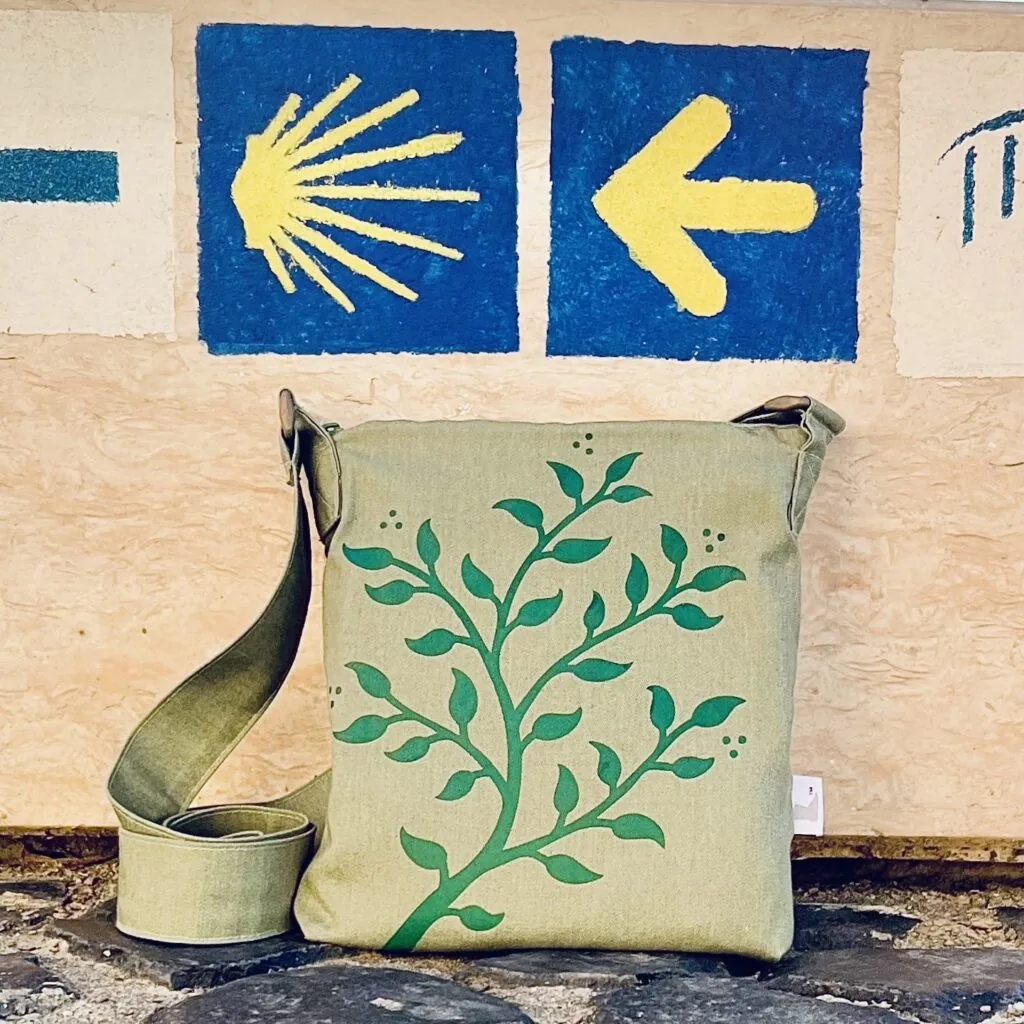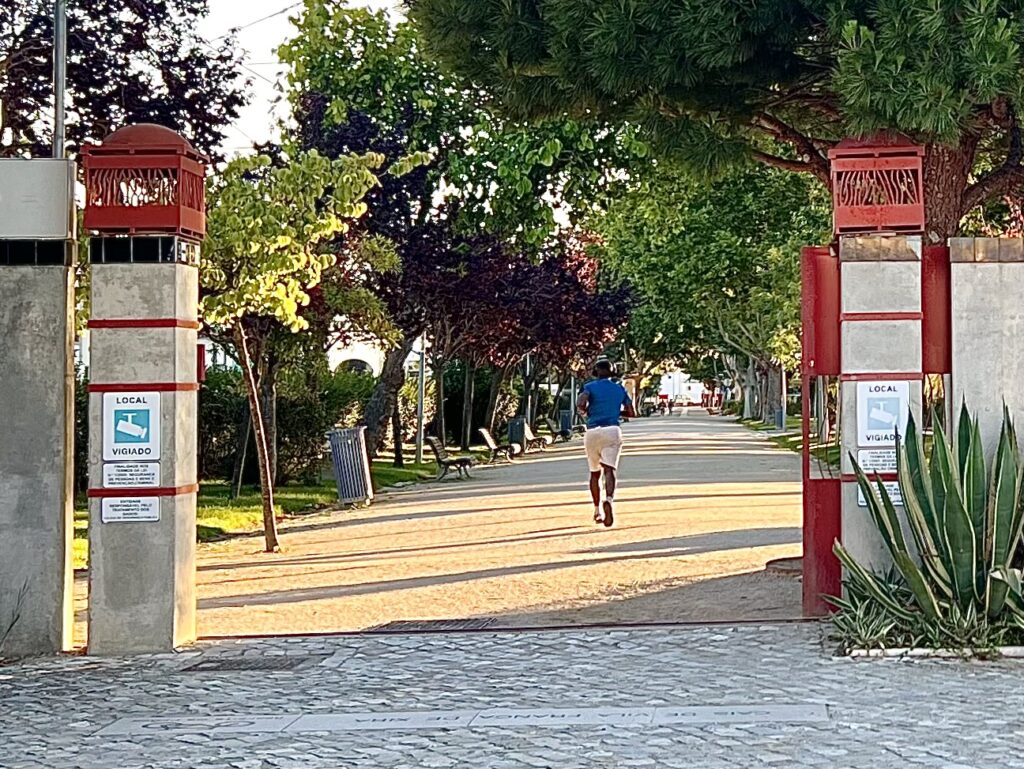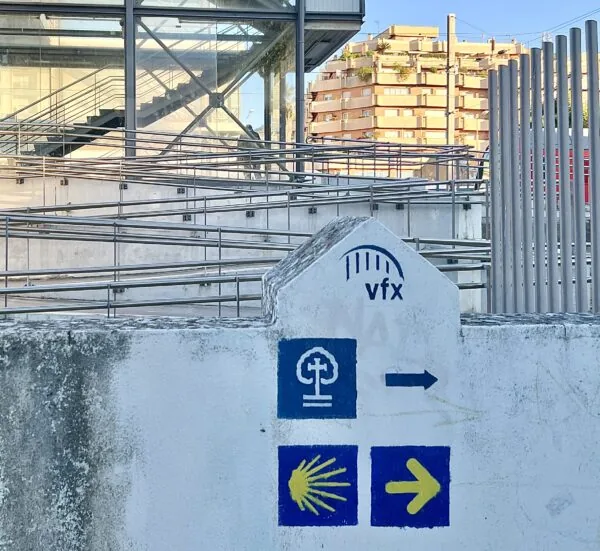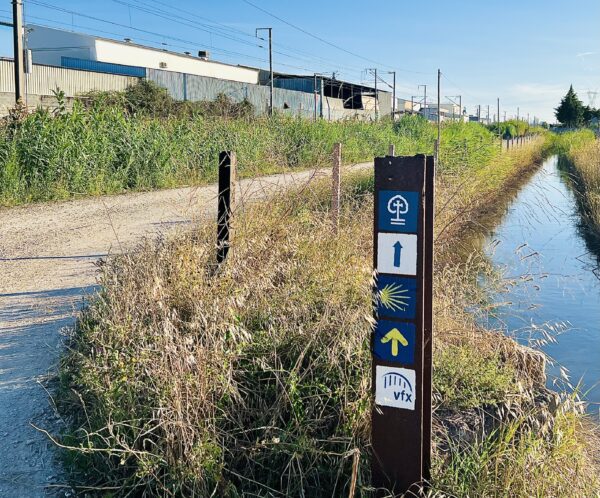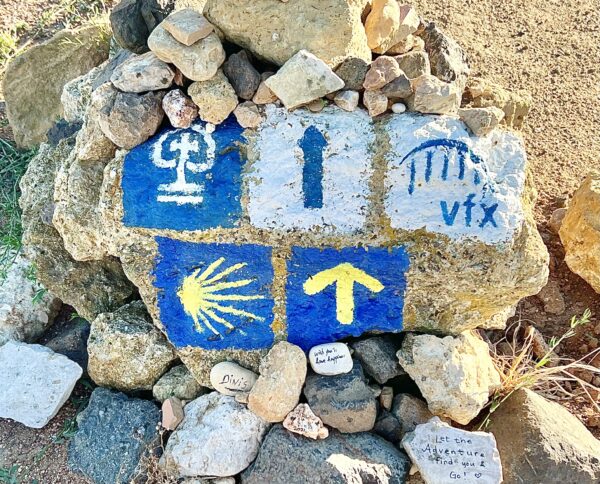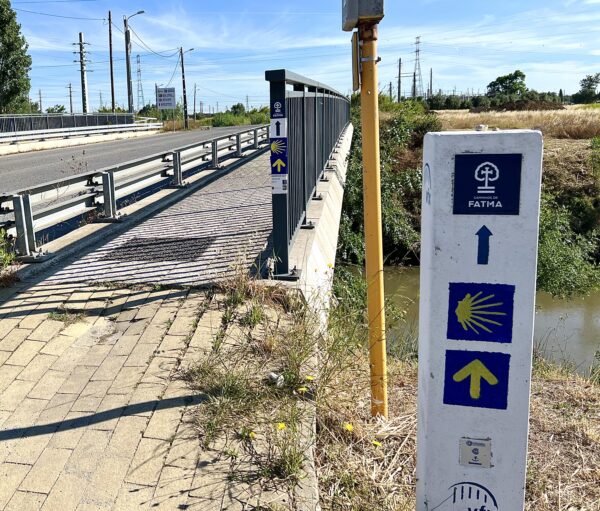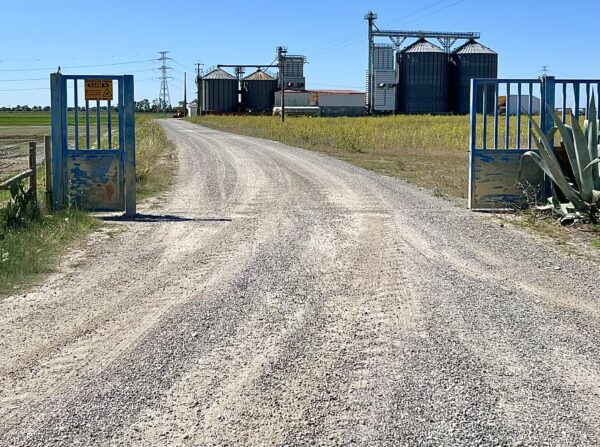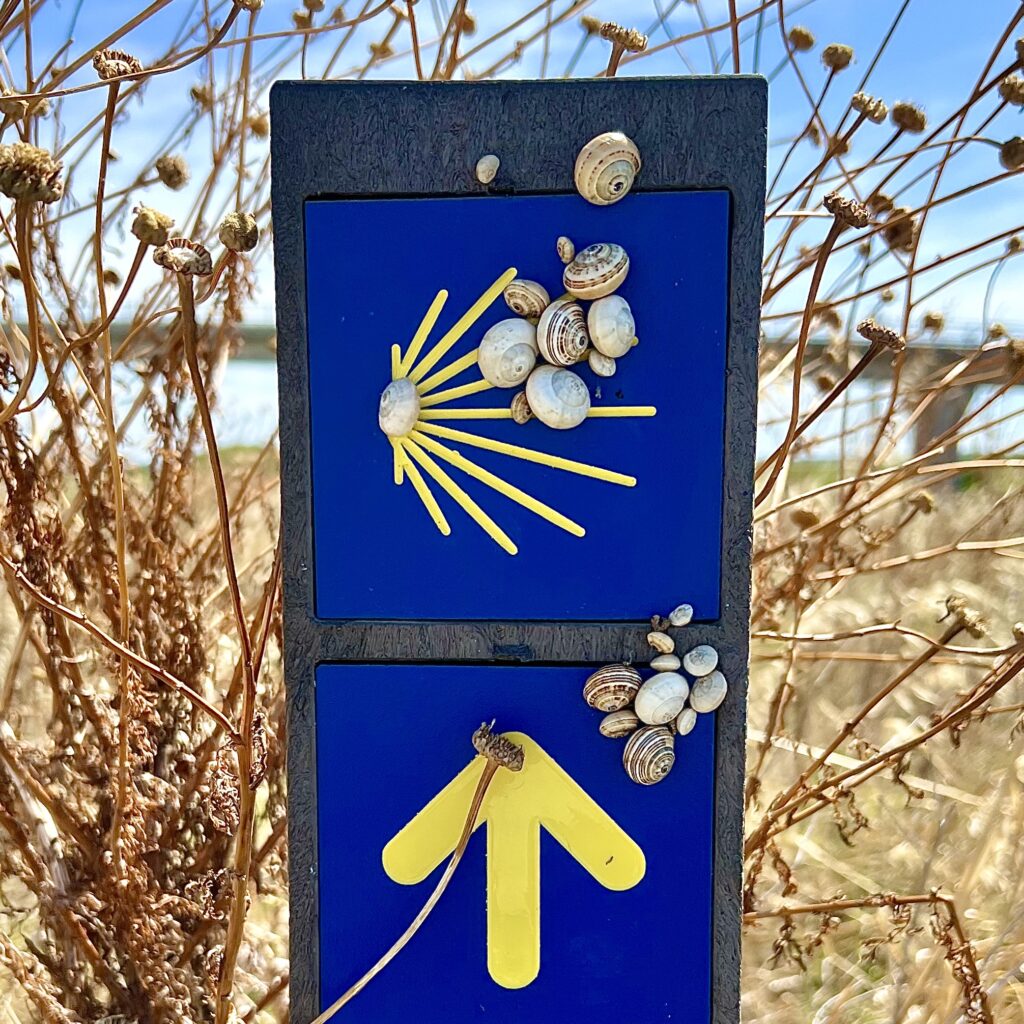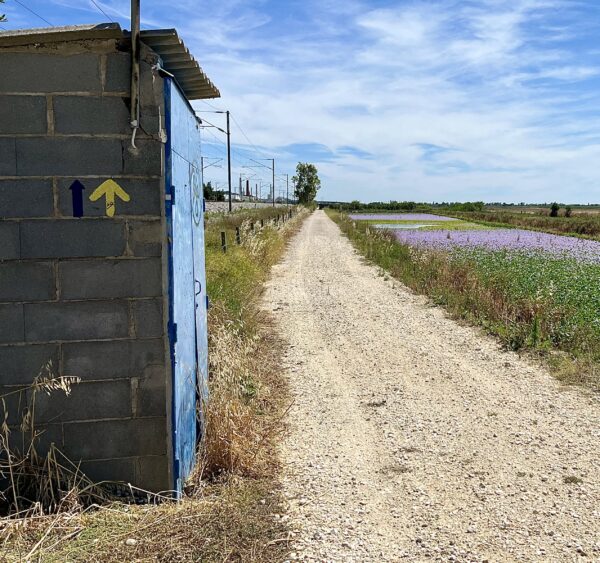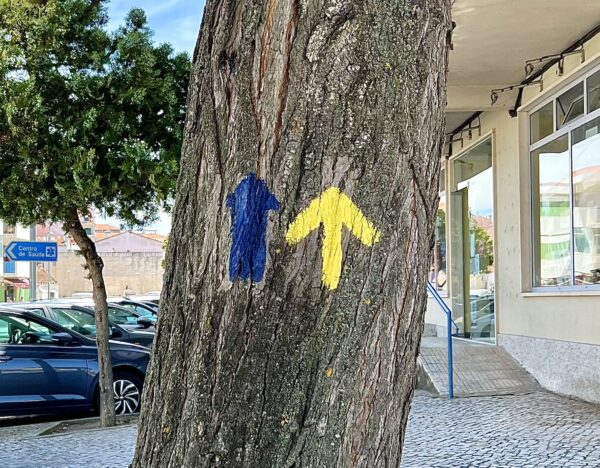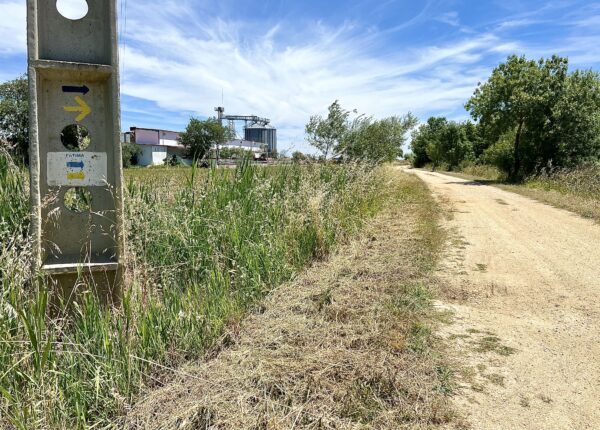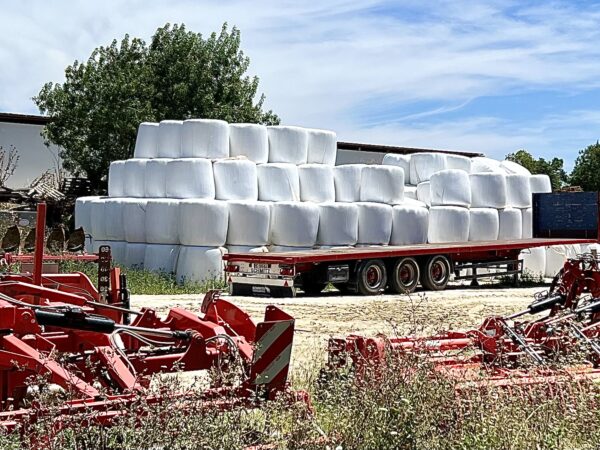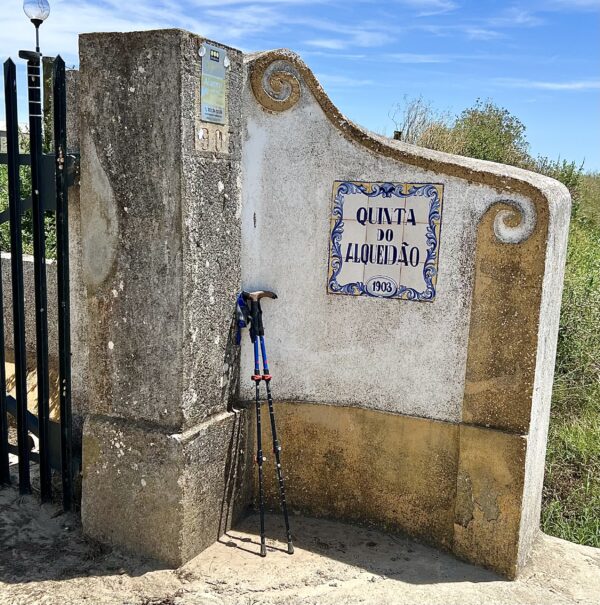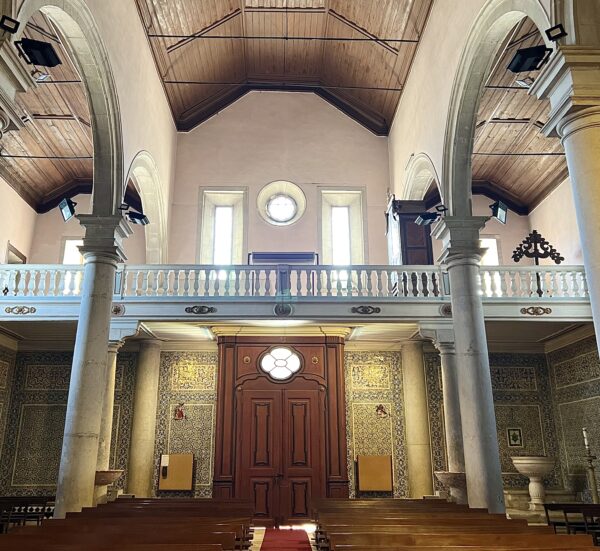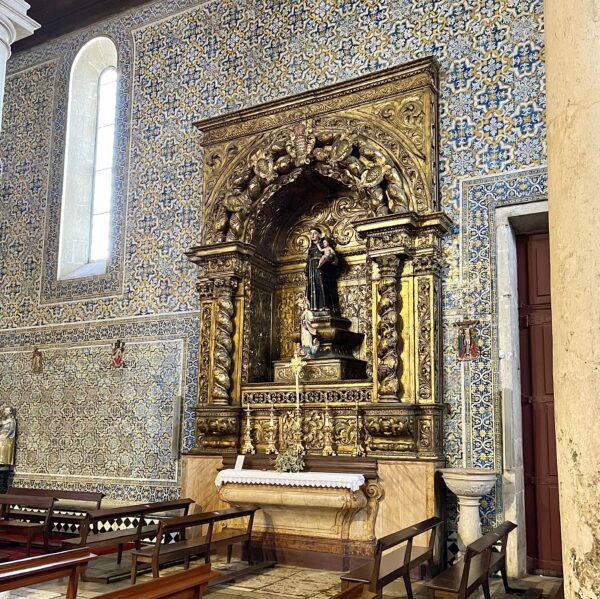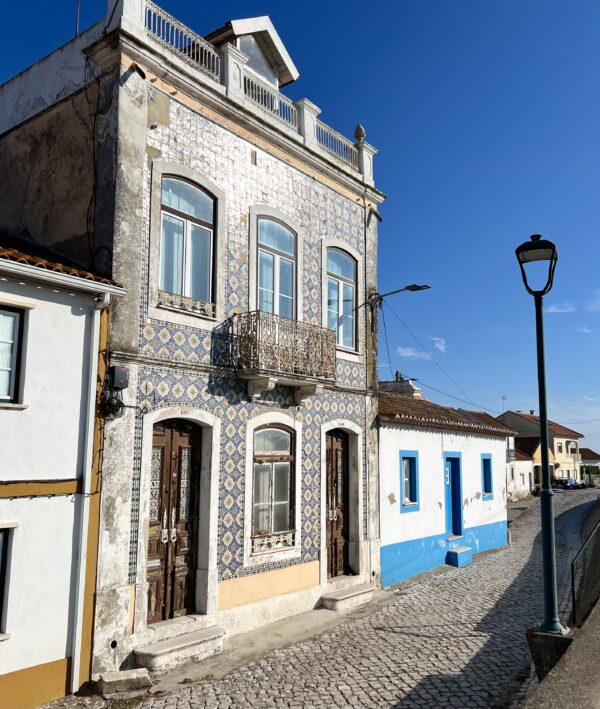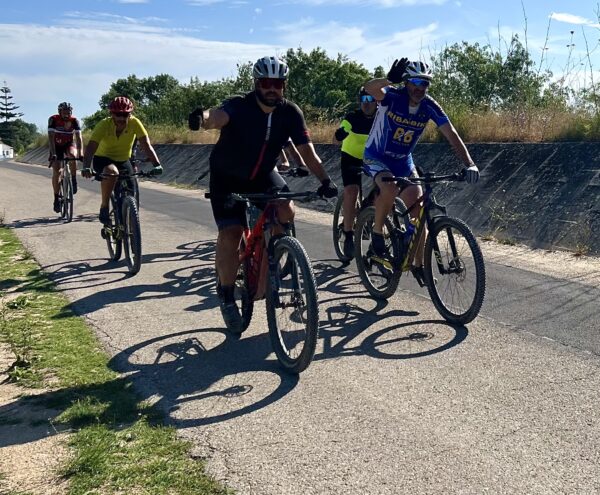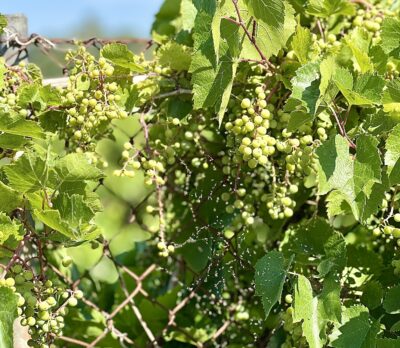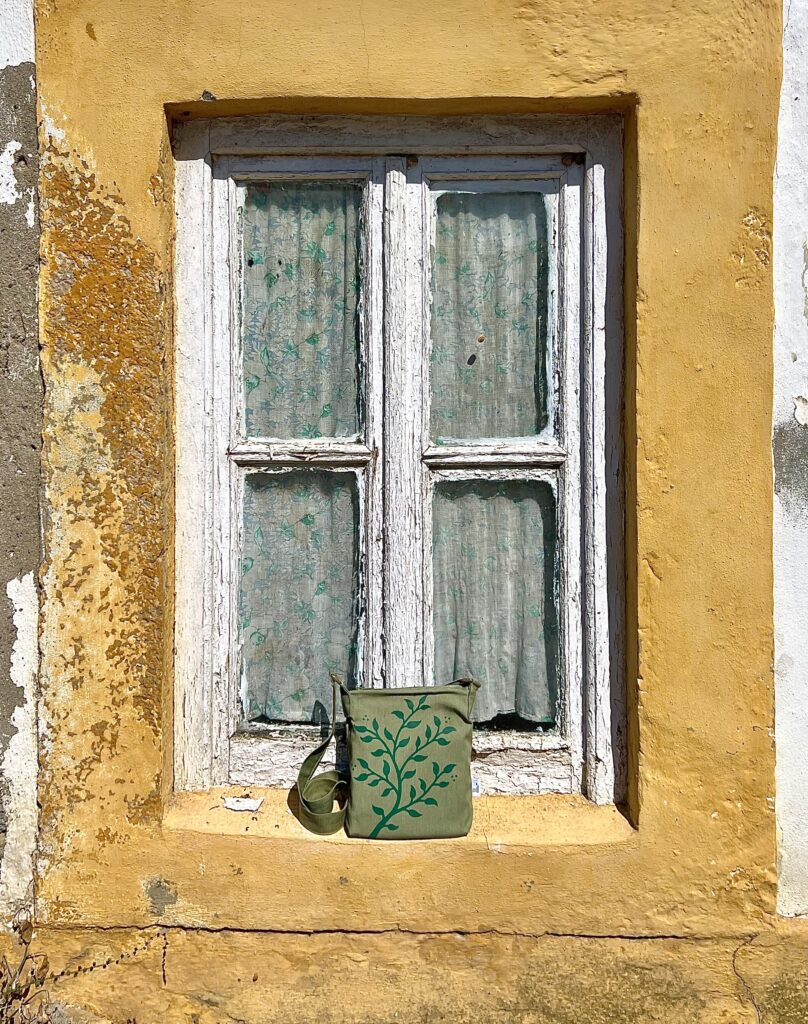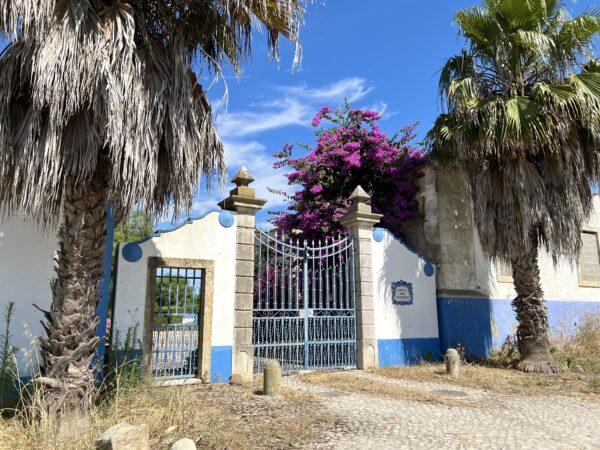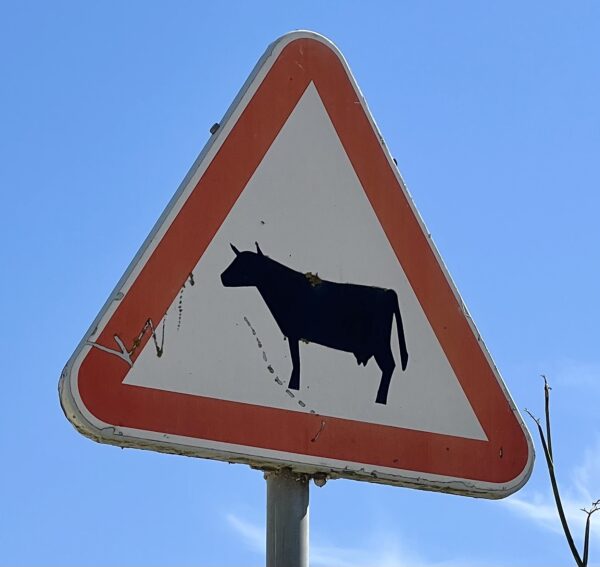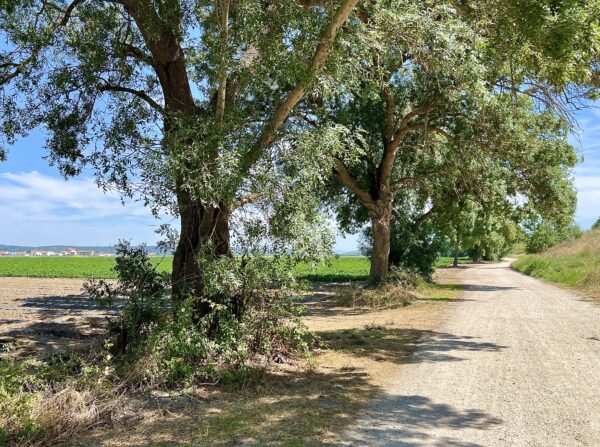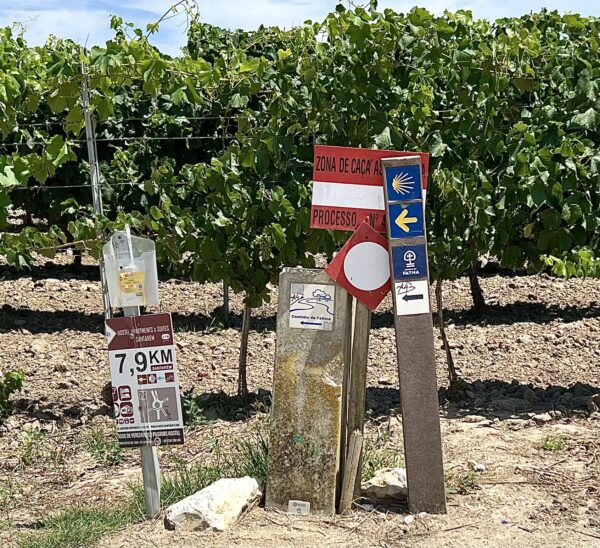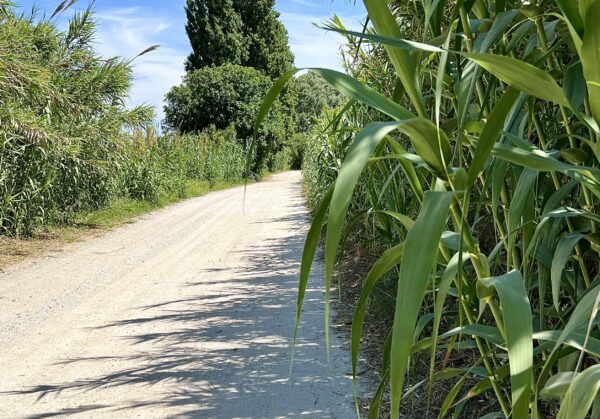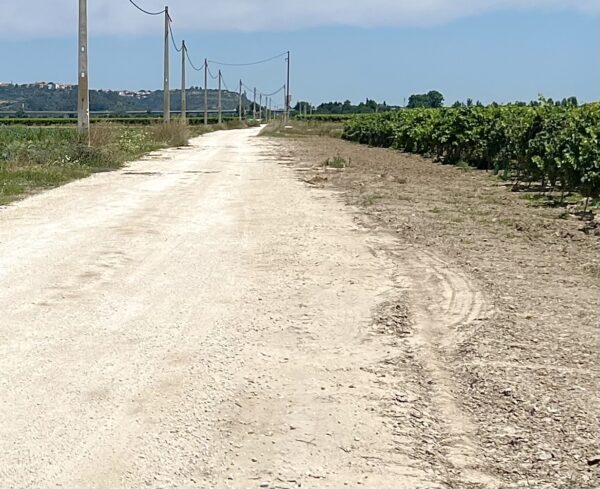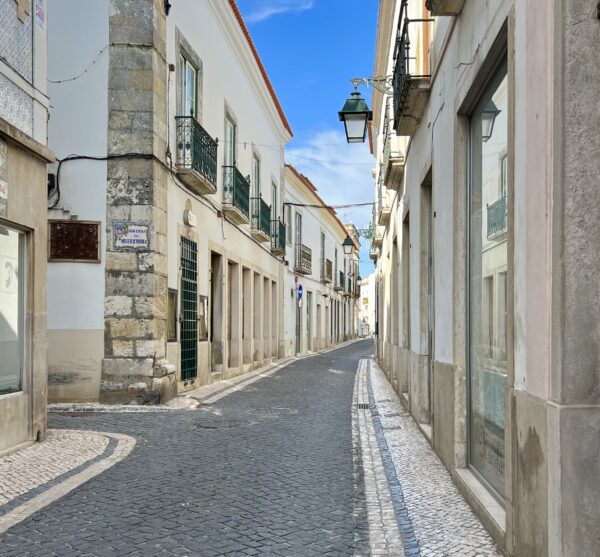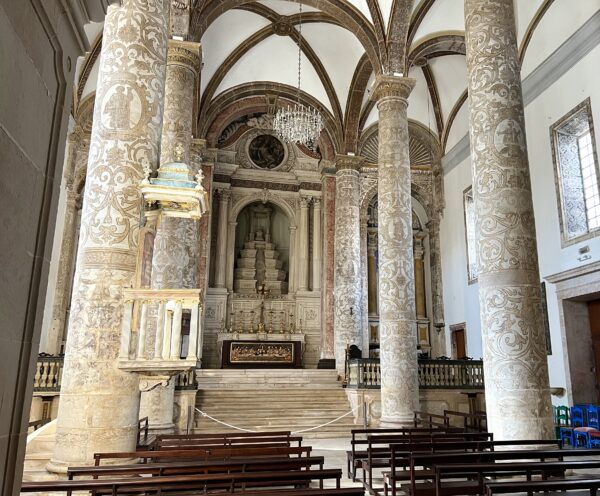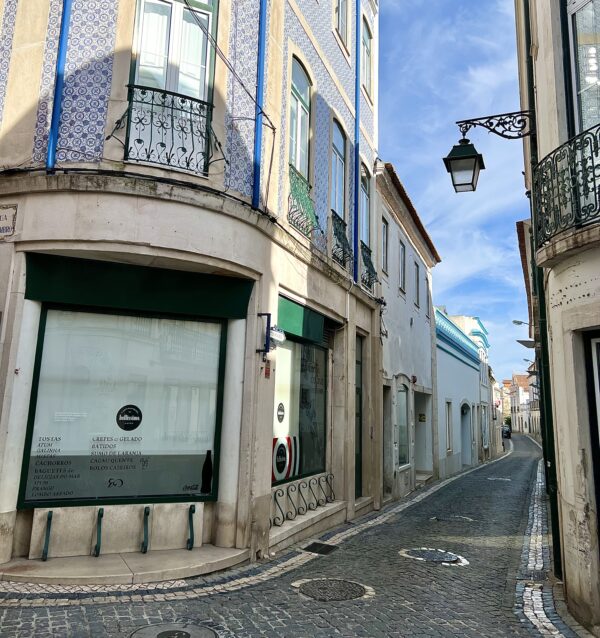On the third day of walking I left Vila Franca in the early morning. It was going to be hot and another ‘shuttle’ day. The plan involved walking further than my lodging stop of Azambuja, then Uber/taxi back to that town; in the morning I’d Uber to where I left off. Thus, the 4th day’s walk would be a shorter distance to the next destination, Santarem. Sound crazy? Fortunately it went well, & mileage divided up into 17 miles to Azambuja and 15 miles to Santarem.
When planning for Camino stages, distances between lodging often determine how far to walk each day. Other factors include whether a destination point offers sightseeing prospects, such as historical & cultural interests. Also, guidebooks divide routes up into specific stages that walkers don’t necessarily need to follow — it’s wise to choose distances that are manageable & within your comfort zone to avoid strains/injuries.
Some people arrange stages ahead of the journey & book reservations (especially if staying in private albergues/private rooms), whereas others decide on stages during the walk, typically 1-2 days ahead. This is a popular option when walkers are on the trail for weeks and want to allow for any changes that could happen. And some people choose to not have any set plans & depend on finding an available bed/room once they arrive.
For more information about route planning & lodging options (including info about ‘pilgrim hostels,’ or albergues) check out Camino Resources: Planning a Walk, Part 1.
The sun was already shining brightly as I joined the Camino trail by Vila Franca’s harbor.
The Green Foliage Bag looked good after the previous days’ walks — any trail dust can be wiped off, and it’s hand washable in cold water with a gentle soap.
Vila Franca’s Jardim Municipal Constantino Palha park was a peaceful area to start the day.
Crossing over railroad tracks again
More industrial buildings along the path
A ‘cairn’ style marker
Be sure to “Walk on the Left” side of roadways — it’s easier to see oncoming traffic.
Festive streamers for the Sao Joao festival decorated Vila Nova da Rainha. While passing through the town I met my first pilgrim — Alicia from Italy who had previously walked the Frances. She mentioned a few others also on the Road during this time — we all must have been walking at different paces to not be encountering each other!
Casa style mail boxes are common in Portugal and one of my favorite customs observed.
Granary structures signaled the beginning of the agricultural fields yet to come.
Snails on markers — a new phenomenon
After reaching Azambuja around noon, I took a ‘bar break’ to refresh from the rising temperature, and then continued on to walk another 5 miles.
Hay bales in white plastic looked like giant marshmallows!
It was a couple more hours of walking until I stopped at a restaurant, Quinta do Alquedao, next to a small airport “out in the middle of nowhere.” I’d located this place on maps when route planning & counted on it being open if help was needed for transport back to Azambuja. Luckily, Uber was available from here, and about 20 minutes later a driver arrived. She then brought me to my hotel, an old building with antique character. My room’s wooden door required a skeleton key to open it.
Later I strolled around town and discovered Igreja Matriz de Azambuja by the town hall. Some of the inside walls were covered with beautiful azulejo tiles (another favorite Portuguese custom).
Azambuja town hall
A market provided fruit for dinner and breakfast.
The light outside the hotel glowed in the cooler evening air, a nice respite from the day’s heat.
In the morning I Ubered back to the airport restaurant and began the trek to Santarem. The first small town from there was Reguengo, comprising one cobblestoned street with quaint buildings.
In Valada a stork’s nest held its own — an amazing engineering feat!
Bikers waved “Bom Caminho.”
Expansive estate farms called “Quintas” spread across the vast agricultural landscape. Each Quinta typically announced itself with an ornamental gate and the farm’s name posted. Crops included grapes & beans — much like what my Grandpa Schaffer grew years ago on his farm in Michigan. Walking by the fields brought back childhood memories of visits there.
Besides agriculture, the region is also known for “equestrian tourism.” I peeked inside Quinta da Marchanta’s open gate, but no horses were within sight at this boutique hotel where guests can enjoy riding.
The Green Foliage Bag posed in Porto de Muge.
Quintas das Varandas entry
Vaca!
Occasional trees were much appreciated.
Surprise! A “Baloico do Peregrino,” or “Pilgrim’s Swing,” tempted walkers to take a break. And yes, I tried it out!
Miles of dirt roads in 90+ degrees — guides had warned to take extra water for this long stretch without any fountains available. High on a hill in the distance perched Santarem — it was a grueling climb up to the city. At the first bar seen after arriving I celebrated with cold “limonada” beverages!
Few people were seen walking around Santarem during ‘siesta’ time. The city, one of the oldest in Portugal, is known for the hottest temperatures nationwide. It’s picturesque old section has cobblestoned streets & sidewalks that border charming shops, restaurants, and historical sites, such as 16th c. Igreja da Misericordia, a National Monument with massive columns that portray rural scenes. I strolled around to find a restaurant open in the later afternoon; after an early dinner it was time to get back to the hotel for a good long sleep.
The past two days were more challenging than the first two because of the hill and the heat, which I hadn’t experienced on any other Camino — sun protective clothes and a hat that covered both my neck & part of my face helped to deflect the intense sunshine. The Quintas had their own beauty and paralleled walking through the Meseta’s abundant wheat, grape, & poppy fields on the Frances.
Last up — cooler weather and the final days to Tomar.
Lisbon to Tomar on Camino Portuguese, Part 3



